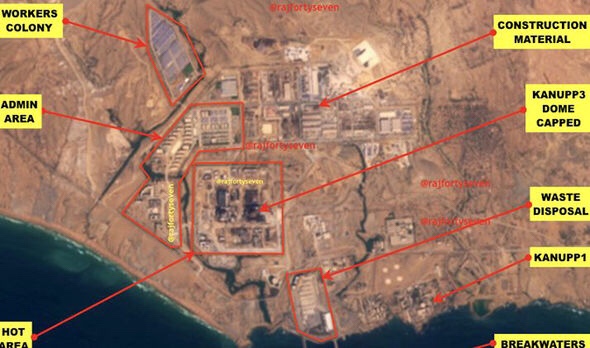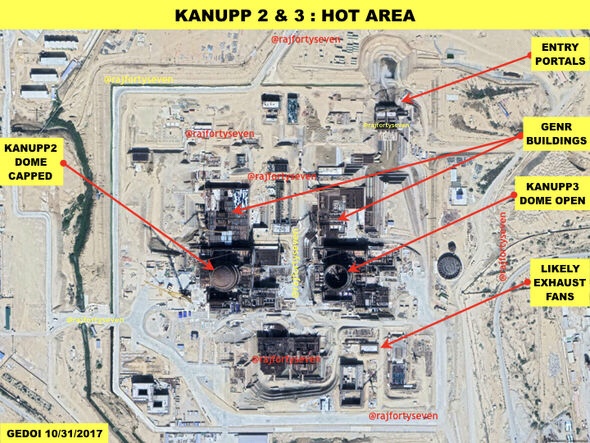
The nuclear plants in Karachi are part of Pakistan’s plans to tap nuclear power (Image: GETTY – @rajfortyseven)
REVEALED: Photos show China HELPING with Pakistan nuclear programme amid WW3 concern
CHINA is extending its influence into Pakistan as it rushes to help the nation’s nuclear programme by building two power stations, satellite images have revealed.
By Matt Drake 14:08, Sat, Oct 20, 2018 | UPDATED: 15:05, Sat, Oct 20, 2018
The nuclear plants in Karachi are part of Pakistan’s plans to tap nuclear power to address its energy crisis.
Its energy crisis has made headlines for years with power cuts a common phenomenon in the country.
Its close ally China stepped in five years ago in 2013 just as President Xi Jinping’s Belt and Road Initiative (BRI) began.
The project is often described as a 21st-century silk road, made up of a “belt” of overland corridors and a “road” of shipping lanes.
Beijing offered Islamabad two power reactors named Hualong-1, a Chinese pressurised water nuclear reactor developed by the China General Nuclear Power Group (CGNPG).
Pakistan is planning on building another Hualong-1 reactor for the Chashma Nuclear Power Plant-5.
Under the deal, 86 percent of the construction cost was borne by the vendor, but options to recover this loan amount to nearly $10billion, The Print reports.
According to satellite images of the plant, the construction appears to extend into the ground which suggests the possibility almost the entire facility may go underground after construction.

Beijing offered Islamabad two power reactors named Hualong-1 (Image: @rajfortyseven)

Pakistan is planning on building another Hualong-1 reactor (Image: @rajfortyseven)
The idea to build underground nuclear plants is to limit the damage in the event of disasters.
But the plants have been set up in an area that is extremely prone to seismic shifts as Karachi is on the cusp of three tectonic plates – the Arabia plate, the Eurasia plate and the India plate.
During an earthquake or tsunami, buried structures bear the brunt of tremors and such a disaster could put the safety of the entire city and surrounding areas at risk.
The project has also been called a Chinese Marshall Plan, a state-backed campaign for global dominance.

The plants have been set up in an area that is extremely prone to seismic shifts (Image: @rajfortyseven)
People fear China is pursuing a form of economic imperialism which gives it too much leverage over other, poorer countries.
Associate professor at Australian National University, Jane Golley, said: “They’ve presented this very grand initiative which has frightened people.
“Rather than using their economic power to make friends, they’ve drummed up more fear that it will be about influence.”
Over the five years since President Xi announced the Chinese Marshall Plan to connect Asia, Africa and Europe, the initiative has been used to describe almost all aspects of Chinese engagement abroad.
Chinese companies have secured more than $340billion in construction contracts.
But China’s dominance comes at the expense of local contractors in partner countries.
No comments:
Post a Comment